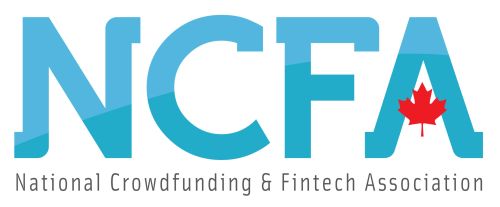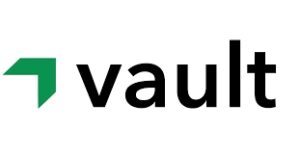AI Regulation | Oct 12, 2023

 Image: Unsplash/Elena Mozhvilo
Image: Unsplash/Elena MozhviloStrategic Overview of Varied Approaches to Regulating AI
With nations actively implementing varied strategies to regulate AI technologies, a comparative lens can offer valuable insights for businesses, policymakers, and stakeholders. In this article, we look at AI regulatory approaches of five countries including the EU, U.S., China, Canada, and Singapore.
1. The EU is Pioneering Comprehensive AI Regulation
- The European Union (EU) has been at the forefront of establishing comprehensive AI regulatory frameworks, notably through its proposed AI Act.
- The EU emphasizes a risk-based approach, categorizing AI systems into different risk levels and applying regulatory requirements accordingly.
- The AI Act also introduces the concept of regulatory sandboxes, providing a collaborative environment for regulators and businesses to explore and understand AI applications before they hit the market.
- For businesses operating in the EU, adherence to these regulations, including ensuring algorithmic transparency and conducting impact assessments, is critical
2. United States is Balancing Innovation and Ethical Oversight
- The United States has adopted a somewhat laissez-faire approach towards AI regulation, focusing on fostering innovation while ensuring ethical development and deployment.
See: Comparing FCC and FTC Approaches to Regulating AI in the US
- Various agencies, like the Federal Trade Commission (FTC) and the Consumer Financial Protection Bureau (CFPB), have initiated policies and guidelines to ensure consumer protection and ethical use of AI.
- The U.S. approach underscores the importance of self-regulation, voluntary standards, and sector-specific guidelines, offering businesses a flexible yet responsible framework to innovate and implement AI technologies.
3. China is Harnessing AI for Global Competitiveness
- China’s approach to AI regulation is deeply intertwined with its ambition to become a global leader in AI by 2030.
- While focusing on rapid AI development and deployment across industries, China also emphasizes data protection and ethical use, as seen in its Data Security Law and Personal Information Protection Law.
See: Balancing AI Innovation and Intellectual Property Rights: Key Insights from the U.S. Senate Subcommittee Hearing
- For businesses in China, aligning AI development with national strategies while ensuring compliance with data and privacy regulations is crucial to harness opportunities and mitigate regulatory risks.
4. Canada is Advocating Ethical AI with a Human-Centric Approach
- Canada has been an advocate for ethical AI, emphasizing a human-centric approach in its regulatory strategies.
- The federal government recently published a voluntary AI code of conduct which is being debated.
- The country focuses on ensuring that AI technologies are developed and used in a manner that is transparent, accountable, and safeguards citizens’ rights.
- Canada’s Digital Charter (Bill C-27 includes an AI Data Act)and the Directive on Automated Decision-Making outline principles and guidelines that prioritize ethical considerations, offering businesses a framework that intertwines innovation with ethical assurance.
5. Singapore is Crafting a Pro-Business AI Ecosystem
- Singapore has carved out a niche as a pro-business hub for AI innovation in Asia.
- The nation’s Model AI Governance Framework provides organizations with practical guidelines on implementing responsible AI, while its Veritas initiative focuses on ensuring fairness, ethics, accountability, and transparency in AI systems within the financial sector.
See: Regulating AI in Canada: The Proposed AI and Data Act (Bill C-27)
- Singapore’s approach offers businesses a conducive environment for AI innovation, coupled with a structured framework to ensure ethical and responsible deployment.
Conclusion
From the comprehensive and robust regulations of the EU to the innovation-driven approach of the U.S., and from China’s strategic alignment with national ambitions to Canada’s ethical, human-centric guidelines, and Singapore’s pro-business frameworks, the global landscape offers varied lessons and insights.
Businesses and policymakers must adapt and navigate these regulatory landscapes to harness the potential of AI while ensuring ethical, transparent, and responsible development and deployment in the global arena.

 The National Crowdfunding & Fintech Association (NCFA Canada) is a financial innovation ecosystem that provides education, market intelligence, industry stewardship, networking and funding opportunities and services to thousands of community members and works closely with industry, government, partners and affiliates to create a vibrant and innovative fintech and funding industry in Canada. Decentralized and distributed, NCFA is engaged with global stakeholders and helps incubate projects and investment in fintech, alternative finance, crowdfunding, peer-to-peer finance, payments, digital assets and tokens, artificial intelligence, blockchain, cryptocurrency, regtech, and insurtech sectors. Join Canada’s Fintech & Funding Community today FREE! Or become a contributing member and get perks. For more information, please visit: www.ncfacanada.org
The National Crowdfunding & Fintech Association (NCFA Canada) is a financial innovation ecosystem that provides education, market intelligence, industry stewardship, networking and funding opportunities and services to thousands of community members and works closely with industry, government, partners and affiliates to create a vibrant and innovative fintech and funding industry in Canada. Decentralized and distributed, NCFA is engaged with global stakeholders and helps incubate projects and investment in fintech, alternative finance, crowdfunding, peer-to-peer finance, payments, digital assets and tokens, artificial intelligence, blockchain, cryptocurrency, regtech, and insurtech sectors. Join Canada’s Fintech & Funding Community today FREE! Or become a contributing member and get perks. For more information, please visit: www.ncfacanada.org
Related Posts
- SEO Powered Content & PR Distribution. Get Amplified Today.
- PlatoData.Network Vertical Generative Ai. Empower Yourself. Access Here.
- PlatoAiStream. Web3 Intelligence. Knowledge Amplified. Access Here.
- PlatoESG. Carbon, CleanTech, Energy, Environment, Solar, Waste Management. Access Here.
- PlatoHealth. Biotech and Clinical Trials Intelligence. Access Here.
- Source: https://ncfacanada.org/comparing-global-regulatory-ai-strategies/
- :has
- :is
- 12
- 150
- 2018
- 300
- 32
- a
- accordingly
- accountability
- accountable
- across
- Act
- actively
- adapt
- adherence
- adopted
- advocate
- advocating
- affiliates
- agencies
- AI
- AI Act
- AI governance
- AI regulation
- AI systems
- aligning
- alignment
- also
- alternative
- alternative finance
- ambitions
- an
- and
- applications
- Applying
- approach
- approaches
- ARE
- Arena
- article
- artificial
- artificial intelligence
- AS
- asia
- Assets
- assurance
- At
- Automated
- balancing
- become
- been
- before
- being
- Bill
- blockchain
- Bureau
- businesses
- by
- cache
- CAN
- Canada
- carved
- categorizing
- CFPB
- China
- Chinas
- closely
- code
- collaborative
- commission
- community
- comparing
- compliance
- comprehensive
- concept
- considerations
- consumer
- Consumer Financial Protection Bureau
- Consumer Protection
- countries
- country
- coupled
- create
- Crowdfunding
- crucial
- cryptocurrency
- data
- data security
- decentralized
- Decision Making
- deployment
- developed
- Development
- different
- digital
- Digital Assets
- distributed
- earth
- ecosystem
- Education
- emphasizes
- emphasizing
- engaged
- ensure
- ensuring
- Environment
- establishing
- Ether (ETH)
- ethical
- ethics
- EU
- Europa
- European
- european union
- European Union (EU)
- explore
- fairness
- FCC
- Federal
- Federal government
- Federal Trade Commission
- finance
- financial
- financial innovation
- Financial Protection
- Financial sector
- fintech
- five
- focuses
- focusing
- For
- forefront
- fostering
- Framework
- frameworks
- from
- FTC
- funding
- funding opportunities
- get
- Global
- governance
- Government
- guidelines
- harness
- Harnessing
- Have
- hearing
- helps
- High
- hinder
- Hit
- http
- HTTPS
- Hub
- image
- Impact
- implement
- implementing
- importance
- in
- includes
- Including
- industries
- industry
- information
- initiated
- innovate
- Innovation
- innovations
- innovative
- insights
- Insurtech
- intellectual
- intellectual property
- Intelligence
- intertwined
- into
- Introduces
- investment
- ITS
- Jan
- jpg
- Key
- landscape
- Law
- leader
- Lens
- Lessons
- levels
- like
- Look
- management
- manner
- Market
- MAS
- max-width
- member
- Members
- Mitigate
- more
- must
- National
- Nations
- Navigate
- networking
- New
- niche
- notably
- Oct
- of
- offer
- offering
- Offers
- on
- operating
- opportunities
- or
- organizations
- out
- outline
- overview
- partners
- payments
- peer to peer
- perks
- personal
- Pioneering
- plato
- Plato Data Intelligence
- PlatoData
- please
- policymakers
- Practical
- principles
- Prioritize
- privacy
- projects
- property
- Property Rights
- proposed
- protection
- provides
- providing
- published
- rapid
- recently
- Regtech
- Regulate
- regulating
- Regulation
- regulations
- Regulators
- regulatory
- Requirements
- responsible
- Revolution
- rights
- Risk
- risks
- robust
- s
- safeguards
- sector
- sector-specific
- Sectors
- security
- seen
- Senate
- Services
- Singapore
- Singapore’s
- somewhat
- stakeholders
- standards
- States
- Stewardship
- Strategic
- strategies
- structured
- subcommittee
- Systems
- Technologies
- that
- The
- These
- they
- this
- thousands
- Through
- to
- today
- Tokens
- top
- towards
- trade
- Transparency
- transparent
- u.s.
- underscores
- understand
- union
- United
- United States
- Unsplash
- us
- use
- used
- Valuable
- vibrant
- Visit
- voluntary
- we
- Wealth
- wealth management
- which
- while
- will
- with
- within
- works
- yet
- zephyrnet










